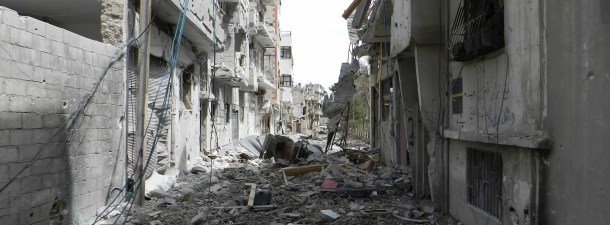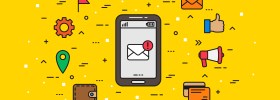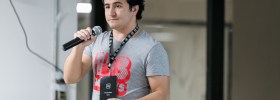The refugee crisis in Europe isn’t just hitting more geographically accessible countries like Turkey and Greece, it’s actually pouring across continents as most world leaders look for ways to help ease this humanitarian crisis. Whether you live in Hungary where a wall is being built to keep them out or are opening your doors and arms like Germany is, or on a more distant country like Canada or the U.S., thousands of refugees from war and famine are trying to fit into the unknown. Most of these refugees come with nothing but the clothes on their backs. Many don’t know the language and don’t even know when their next meal will be. And as winter is coming, shelter becomes a more urgent demand for these displaced men, women and children.
In times of seeming hopelessness, one of the hard-to-catch glimmers of hope comes from the innovation that arises from it. There’s no doubt that the refugee crisis has sparked a rush of creative innovation that, where we seem to lack the solutions for the cause of their pain, we look to bring small amounts of comfort into their transition.
Since it’s an international human problem, of course the United Nations is leading the front in attempting to find innovative solutions to an impossible situation. The U.N. High Commissioner for Human Rights (UNHCR) even has an innovation fund and series of projects focused on refugees at every stage of the design process. It’s an offshoot organization that focuses on creating a lot of minimum valuable products (MVP) and prototypes that are first field-tested before they are refined based on first-hand refugee use cases and feedback. The 70-year-old organization is applying lean startup methodology to generate, test and pivot immediate solutions for faster assistance for the forcibly displaced.
How can children learn so far from language and home?
We’ve already spoken about how mobile learning has become a huge opportunity for social impact.
More than half of the 115,000 refugees in the Kenyan Kakuma camp are children. Digital learning platform Made by Many has partnered with Skype in the Classroom to open up and connect residents of this 20-year-old camp. For the first time this year, these students young and old have access to not only outside education systems but actual classrooms, new languages, and modern, audiovisual methods of learning.
Last year, Vodafone worked with the UNHCR to build 13 Instant Network Classrooms in Dadaab, Kenya where a 350,000 Somalis have been uprooted by drought, poverty and civil unrest. By installing tablets, solar-powered batteries and backup generators, connectivity, and resources that connect to coaches, the Instant Network Classrooms are the first to be equipped for instant onboarding to jump over the barrier of technological education that often dramatically delays the actual education topics at hand. This program is unique because it is “focusing less on the technology and more on developing a cohesive system with a strong emphasis on content and capacity building.” It also helped with learning things that perhaps were only concepts for kids like understanding what a river and what a forest actually is.
They also have programs like simply providing fully loaded e-readers with serious construction worker cases. All of these are pilot programs with hopeful but unknown formal results.
Can you help the environment and the people too?
But it’s not just huge multinational NGOs that are helping redesign the experience of peoples in crisis. One clever Jordanian-Canadian architect and designer Abeer Seikaly has folded function, ecology and, dare we say, contemporary art into her multipurpose tents for the displaced. This part-shelter, part-shower, part-plumbing, all biodegradable invention is simply mind-blowing. Modeled after a mixture of snakeskin and traditional fabric weaving, the double-layered tent is able to close out rain and cold weather, while opening up to breathe cool air in and warm air out during the summer months. Solar energy is stored into the fabric to provide renewable battery power at night. Rainwater is collected and stored in the woven outer pockets for household usage and even showers, filtered by a thermosiphoning system. But perhaps the craziest part of these igloo-basket-like structures is that they fold right up, allowing quick transport and construction in refugee villages and after natural disasters.
As Seikaly says, “Design is supposed to give form to a gap in people’s needs.” She looks at the design of her tents as a way to aid people in weaving their own lives back together.
Do you know of an invention, innovation or design that is helping aid the refugee crisis? Scroll down to comment or tell us about it @TefDigial.









